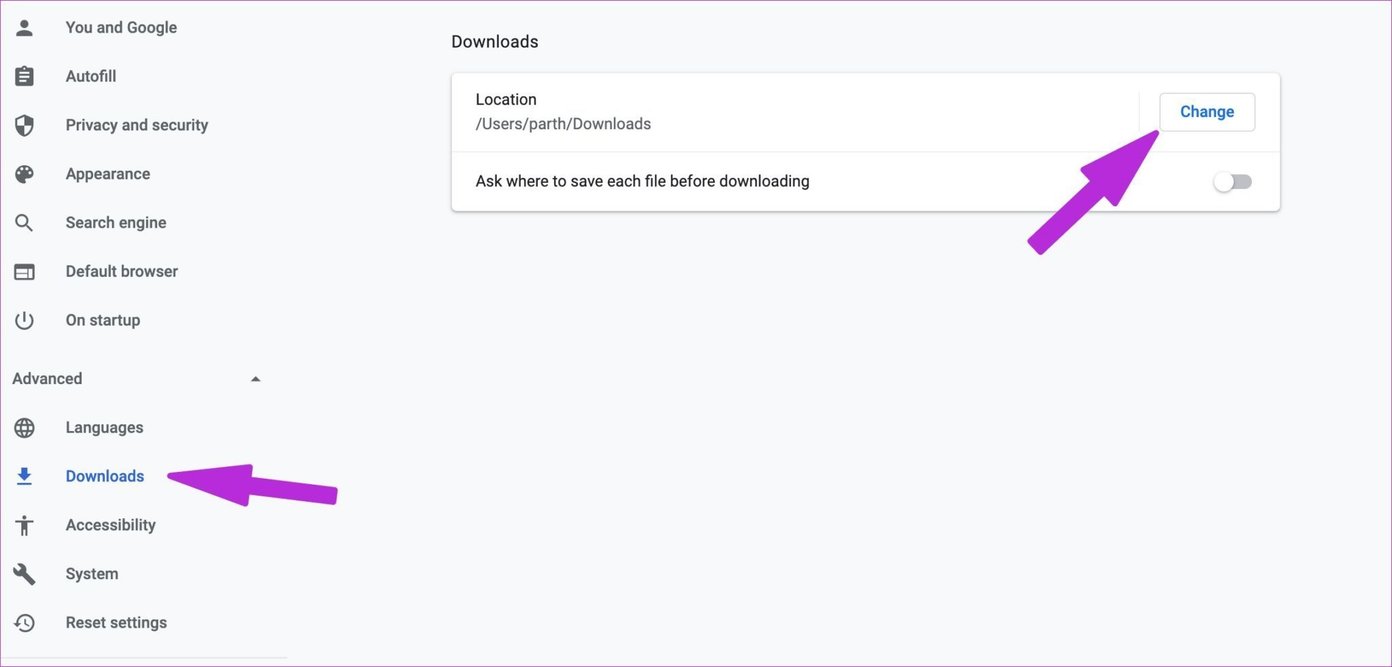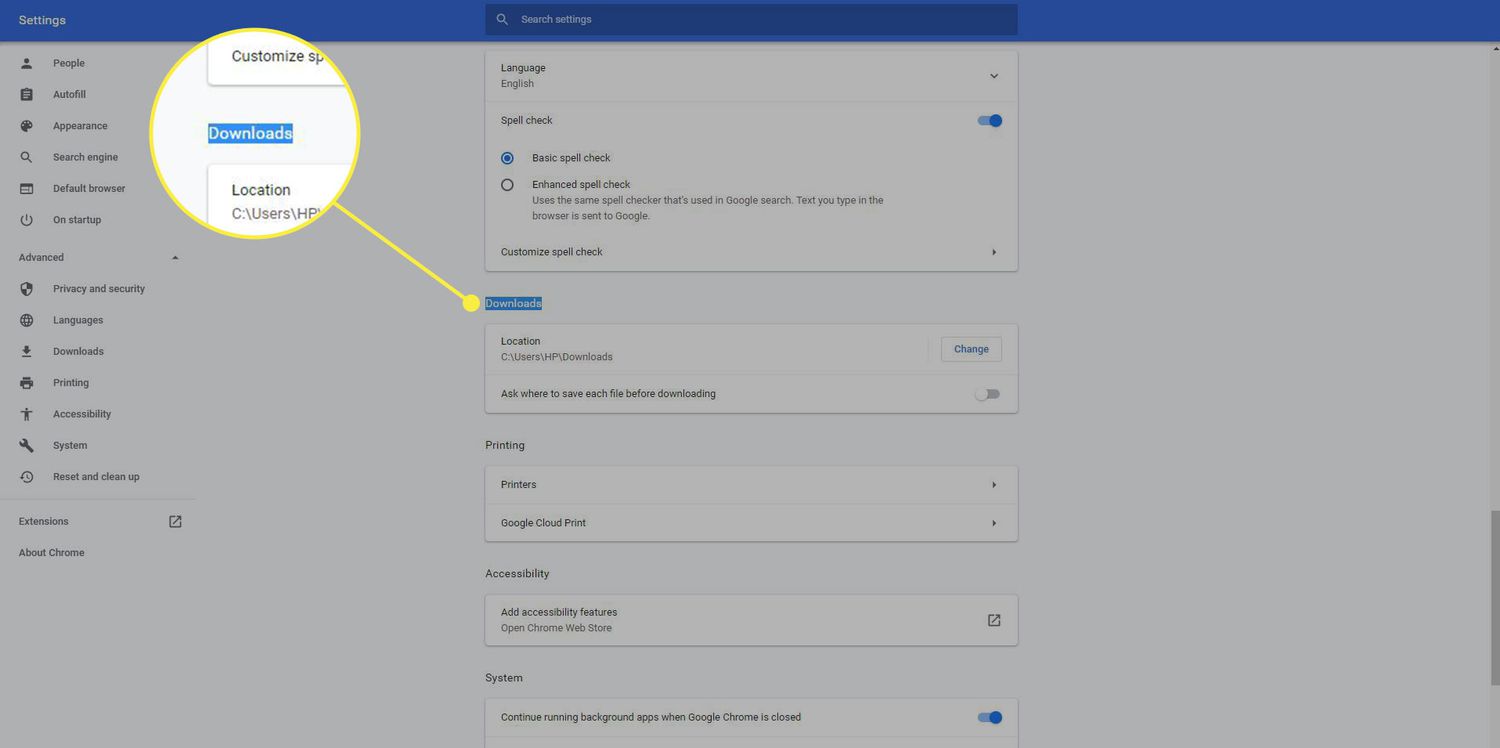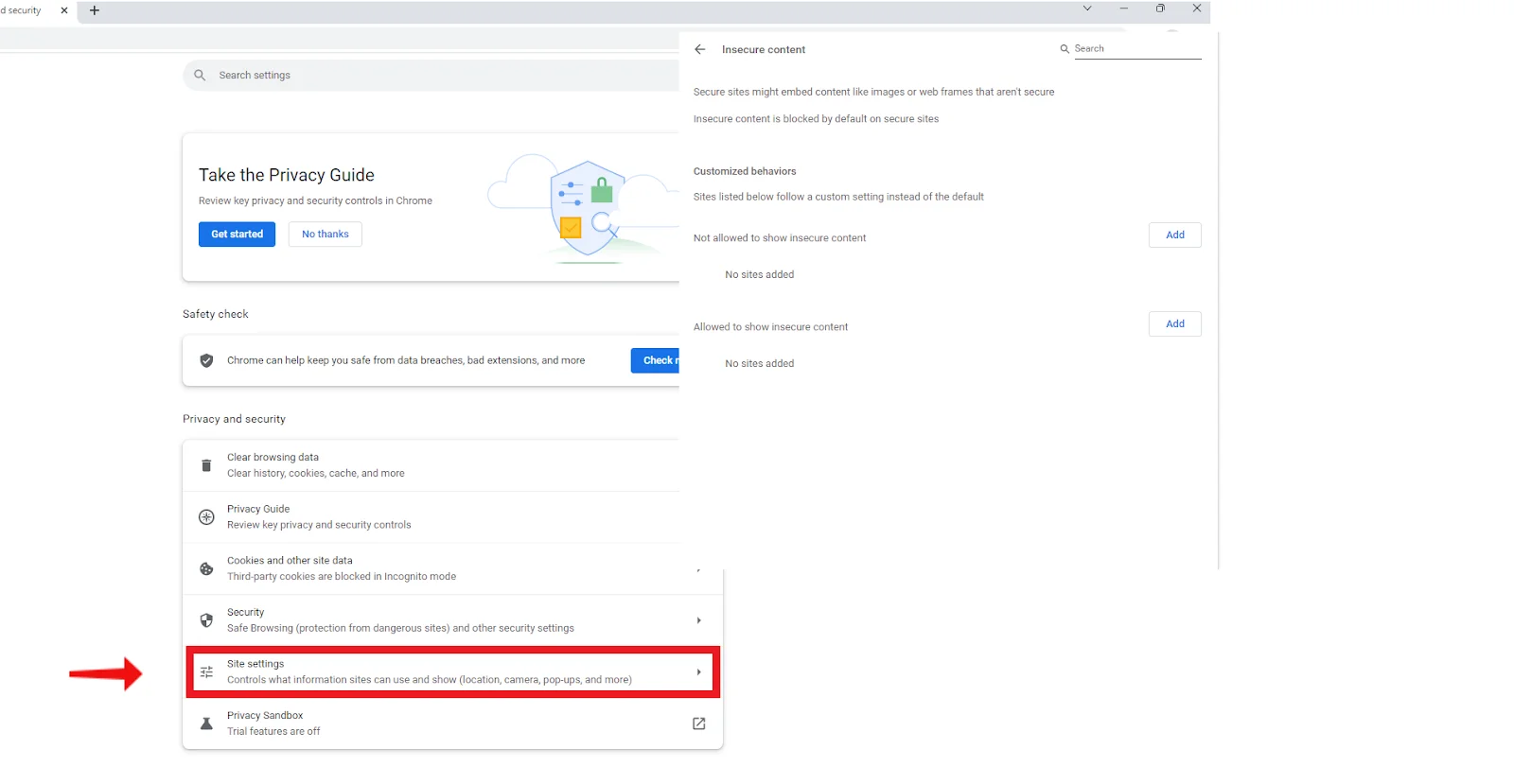Introduction
Changing the default download location in Google Chrome can significantly enhance your browsing experience and streamline your file management process. By customizing the download folder, you can ensure that downloaded files are easily accessible and organized according to your preferences. Whether you prefer to save files directly to your desktop, a specific folder, or an external drive, Chrome allows you to tailor the download location to suit your needs.
In this article, we will guide you through the simple and straightforward process of changing where Chrome downloads go. By following these steps, you can take control of your downloads and ensure that they are stored in a location that is convenient for you. Whether you are a seasoned Chrome user or just getting started with this popular web browser, customizing the download location can help you optimize your workflow and keep your digital workspace tidy.
Let's dive into the step-by-step instructions to modify the default download location in Chrome. Whether you're looking to streamline your file organization or simply prefer a different location for your downloads, this guide will empower you to make the necessary adjustments with ease. By the end of this tutorial, you'll have the knowledge and confidence to personalize your Chrome download settings according to your specific preferences.
Step 1: Open Chrome Settings
To begin the process of changing the default download location in Google Chrome, the first step is to access the browser's settings. This can be easily accomplished by clicking on the three-dot menu icon located in the top-right corner of the Chrome window. Upon clicking the icon, a drop-down menu will appear, presenting a range of options for customizing and managing the browser's settings.
Once the drop-down menu is displayed, navigate to the "Settings" option, which is represented by a gear icon. Clicking on this option will redirect you to the Chrome Settings page, where you can explore and modify various aspects of the browser's functionality to better suit your preferences and requirements.
Upon reaching the Chrome Settings page, you will find a plethora of customization options, including those related to appearance, search engine preferences, privacy and security settings, and more. This centralized hub serves as the control center for tailoring Chrome to your specific needs, making it a convenient and essential resource for optimizing your browsing experience.
By accessing the Chrome Settings, you gain the ability to delve into the inner workings of the browser, allowing you to fine-tune its behavior and features according to your individual preferences. Whether you are looking to adjust download settings, manage extensions, or enhance privacy and security measures, the Chrome Settings page provides a comprehensive array of options to cater to your needs.
In summary, opening Chrome Settings is the crucial first step in the process of changing the default download location in Google Chrome. By navigating to the Settings page, you gain access to a wealth of customization options, empowering you to tailor the browser to your liking and ensure that it aligns with your unique browsing habits and requirements. This initial step sets the stage for the subsequent actions that will enable you to personalize your Chrome download settings and optimize your overall browsing experience.
Step 2: Click on "Advanced"
After accessing the Chrome Settings, the next pivotal step in the process of customizing the default download location involves navigating to the "Advanced" section. This section houses a myriad of advanced settings and features that allow users to delve deeper into the inner workings of the browser, enabling them to fine-tune its behavior and functionality according to their specific preferences and requirements.
To proceed, scroll down the Chrome Settings page until you encounter the "Advanced" option. Clicking on this option will unveil a treasure trove of advanced settings, providing you with the opportunity to explore and modify various aspects of the browser that may not be readily accessible from the primary settings interface.
Upon entering the "Advanced" section, you will be presented with an array of advanced settings that cover a wide spectrum of functionalities, ranging from privacy and security measures to system and performance optimizations. This section serves as a gateway to a wealth of additional customization options, empowering users to tailor Chrome to their unique preferences and requirements.
In the "Advanced" section, users can explore and adjust settings related to privacy and security, site permissions, accessibility features, system configurations, and more. This expansive collection of advanced settings offers users the flexibility to personalize their browsing experience to a granular level, ensuring that Chrome aligns with their individual needs and preferences.
Furthermore, the "Advanced" section provides access to experimental features and functionalities that are not yet fully integrated into the standard Chrome experience. By enabling and experimenting with these features, users can gain early access to cutting-edge capabilities and contribute to the evolution of the browser's functionality.
In summary, clicking on "Advanced" within the Chrome Settings page is a pivotal step that unlocks a realm of advanced settings and features, allowing users to fine-tune the browser's behavior and functionality to align with their unique preferences and requirements. This section serves as a gateway to a wealth of additional customization options, empowering users to personalize their browsing experience and explore experimental features that may shape the future of Chrome's capabilities.
Step 3: Find the "Downloads" Section
Once you have navigated to the "Advanced" section within the Chrome Settings, the next crucial step in customizing the default download location involves locating the "Downloads" section. This section houses essential settings and preferences related to the downloading behavior of the browser, allowing users to exert control over where their downloaded files are stored and how they are managed.
To find the "Downloads" section, scroll down the "Advanced" settings page until you encounter the "Downloads" heading. This section is typically positioned within the "Privacy and security" category, reflecting the significance of managing downloaded files in a secure and privacy-conscious manner.
Upon reaching the "Downloads" section, you will be presented with a range of customizable options that pertain to the handling and storage of downloaded files. These options include specifying the default download location, configuring how downloaded files are handled, and managing the behavior of the download prompt.
One of the key features within the "Downloads" section is the ability to change the default download location. By default, Chrome saves downloaded files to the "Downloads" folder within the user's profile directory. However, users have the flexibility to modify this setting and designate a different location for their downloads, such as a specific folder on their computer or an external storage device.
In addition to customizing the download location, the "Downloads" section also allows users to configure how downloaded files are handled. This includes options to prompt for the download location for each file, automatically open certain file types after downloading, and enable the "Ask where to save each file before downloading" feature, which provides granular control over the storage location for individual downloads.
Furthermore, the "Downloads" section provides insights into the browsing history and download statistics, allowing users to review their download activity and manage their downloaded files efficiently. This feature enhances transparency and empowers users to stay informed about their download behavior within the browser.
In summary, finding the "Downloads" section within the Chrome Settings is a pivotal step that grants users access to a range of customizable options for managing their downloaded files. By exploring this section, users can tailor the default download location, configure download handling preferences, and gain insights into their download activity, thereby empowering them to optimize their file management and enhance their browsing experience.
Step 4: Change the Download Location
Changing the default download location in Google Chrome is a straightforward process that empowers users to personalize their file management experience. By customizing the download location, users can ensure that downloaded files are stored in a convenient and easily accessible location of their choosing. This level of control allows for seamless organization and efficient retrieval of downloaded content, contributing to an enhanced browsing experience.
To change the download location in Chrome, begin by locating the "Downloads" section within the "Advanced" settings of the Chrome browser. Once within this section, you will find the option to modify the default download location. By default, Chrome saves downloaded files to the "Downloads" folder within the user's profile directory. However, users have the flexibility to designate an alternative location for their downloads, such as a specific folder on their computer or an external storage device.
Upon selecting the option to change the download location, a dialog box will appear, prompting users to specify the new destination for their downloaded files. This intuitive interface allows users to navigate their file system and select the desired folder or location where they wish to store their downloads. Whether it's a dedicated folder for work-related downloads, a designated location on an external drive, or a custom directory for specific file types, users can tailor the download location to align with their unique preferences and organizational needs.
By changing the download location, users can streamline their file management process and ensure that downloaded content is stored in a manner that complements their workflow. This level of customization empowers users to maintain a tidy and organized digital workspace, facilitating efficient access to downloaded files when needed. Whether it's accessing recently downloaded documents, images, or software installers, having control over the download location enhances overall productivity and convenience.
In summary, the ability to change the download location in Google Chrome provides users with the flexibility to personalize their file management experience. By designating a preferred location for downloaded files, users can optimize their workflow, maintain an organized digital environment, and ensure seamless access to their downloaded content. This simple yet impactful customization option empowers users to tailor their browsing experience to suit their individual needs and preferences.
Step 5: Confirm the Changes
After modifying the default download location in Google Chrome, it is essential to confirm the changes to ensure that the new settings are applied effectively. This step serves as the final validation of the customized download location, providing users with the assurance that their downloaded files will be directed to the designated location as intended.
Upon completing the process of changing the download location, users can verify the modifications by initiating a download within the browser. By selecting a file to download, users can observe the behavior of the download prompt and confirm that the browser is directing the downloaded file to the newly specified location. This practical validation allows users to visually confirm that the customized download location is operational and that the browser is adhering to the updated settings.
Furthermore, confirming the changes provides users with the opportunity to review the download process and ensure that the browser's behavior aligns with their expectations. By initiating a download and monitoring the storage location of the downloaded file, users can validate that the customized download location is seamlessly integrated into their browsing experience.
In addition to visually confirming the download behavior, users can also navigate to the designated download location within their file system to verify that the downloaded file has been stored in the specified folder or location. This proactive validation allows users to directly inspect the downloaded content and confirm that it is being directed to the intended destination as per the customized settings.
By confirming the changes, users can gain confidence in the effectiveness of their customized download location, ensuring that the browser accurately adheres to the updated settings. This validation process empowers users to proactively verify the functionality of the modified download location, thereby enhancing their control over the storage and organization of downloaded files within the Chrome browser.
In summary, confirming the changes to the customized download location in Google Chrome is a crucial step that allows users to validate the effectiveness of their modifications. By initiating a download, monitoring the download behavior, and verifying the storage location of downloaded files, users can ensure that the browser accurately directs downloaded content to the designated location as per their customized settings. This proactive validation process enhances user confidence and ensures a seamless transition to the newly specified download location.

























